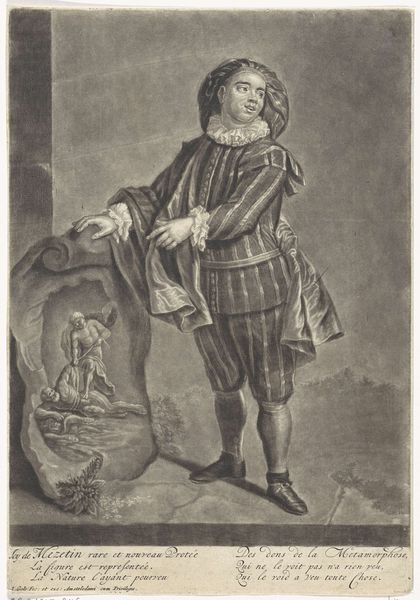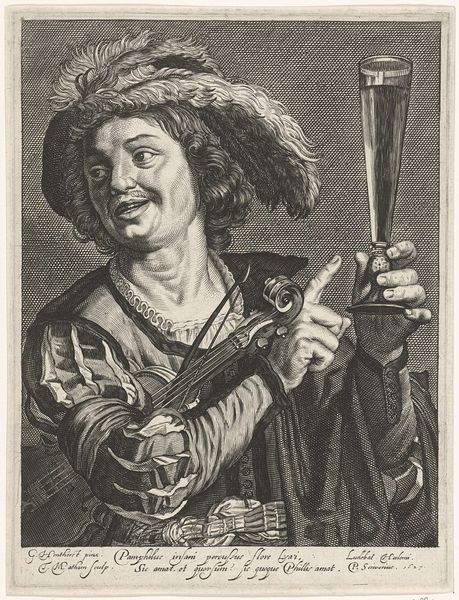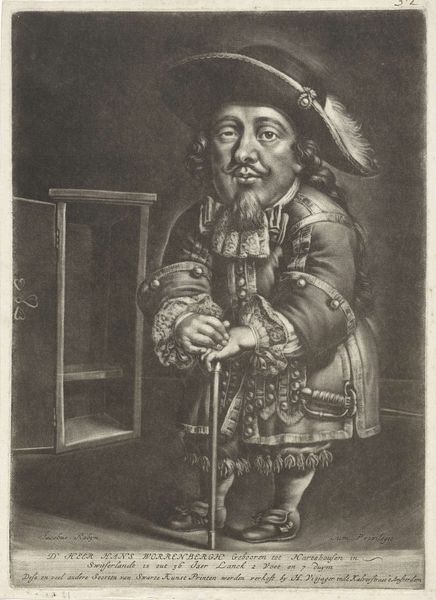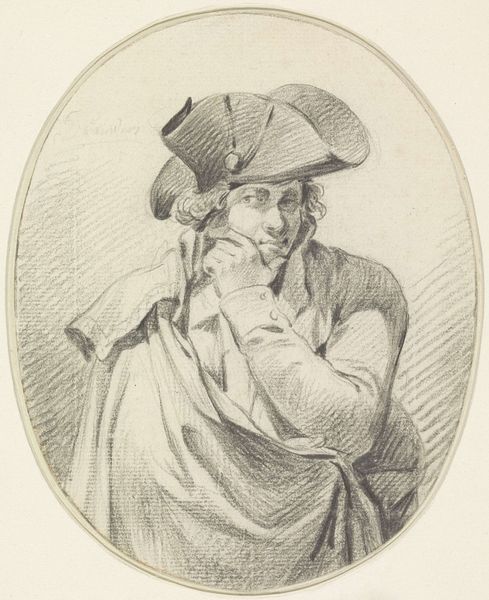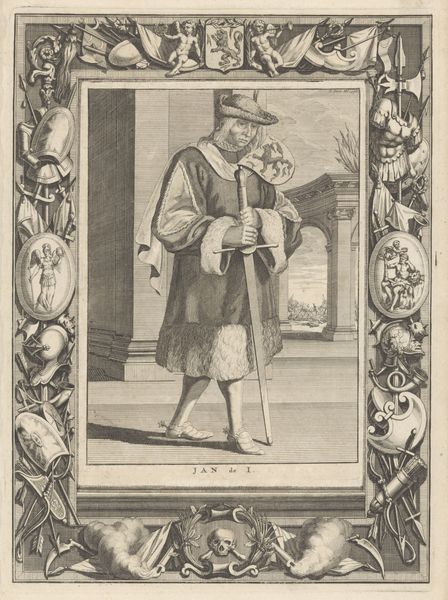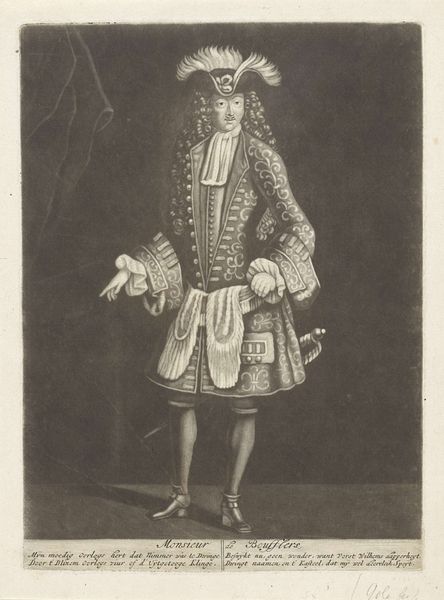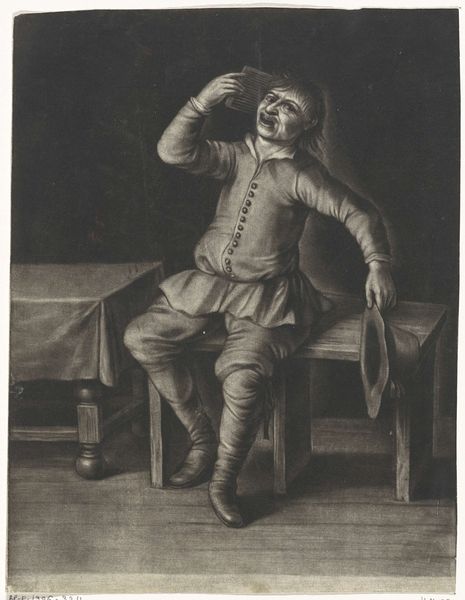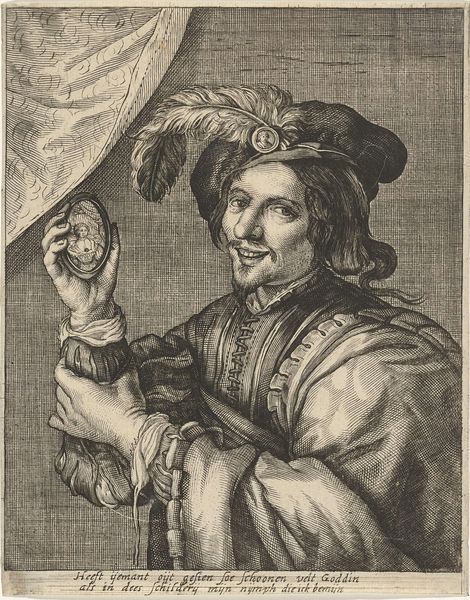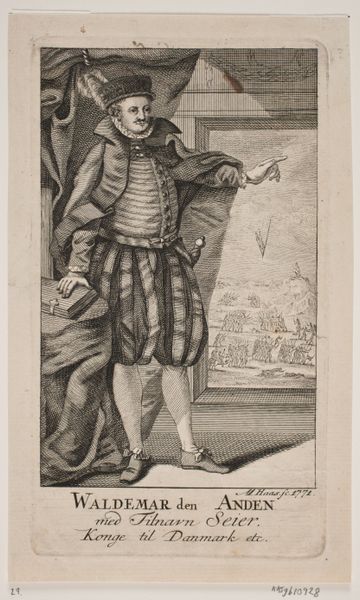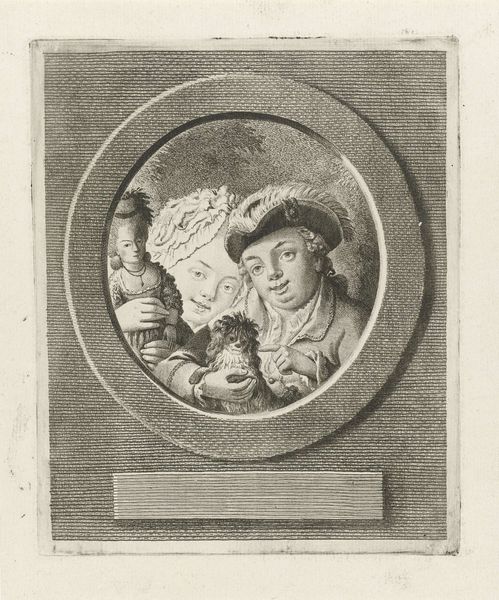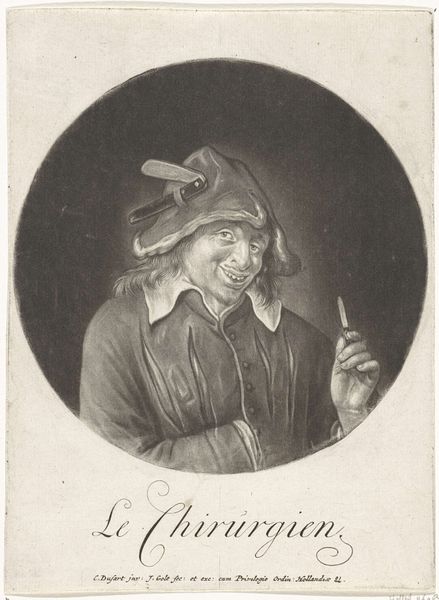
print, glass, engraving
#
portrait
#
baroque
#
dutch-golden-age
# print
#
old engraving style
#
glass
#
19th century
#
genre-painting
#
engraving
Dimensions: height 246 mm, width 165 mm
Copyright: Rijks Museum: Open Domain
Editor: We're looking at "Man with a Roemer," an engraving by Jacob Gole, created sometime between 1670 and 1724. It’s housed at the Rijksmuseum. I’m immediately struck by the subject’s exuberant expression and somewhat disheveled attire. What do you see when you look at this print? Curator: I see a potent commentary on social hierarchies and the construction of identity in the Dutch Golden Age. Consider the ‘Roemer’ itself, the glass. Who had access to that glass, to alcohol in general, and what did that consumption signify? His boisterous presentation, bordering on uncouth, can be read as a deliberate inversion, a moment of carnivalesque disruption. Editor: So, it's a purposeful representation of someone who is perhaps flouting social norms? Curator: Precisely. And within this subversion lies power. Is he genuinely joyful, or is there a hint of satire directed at the privileged classes? Also, observe the text at the base: "C'est tout son coeur," "It is all his heart." Could it be interpreted as a justification, even a romanticisation, of base instincts? What societal anxieties might be surfacing here? Editor: I hadn’t considered it in those terms. I was mainly seeing a jovial portrait. Thinking about it now, the engraving feels charged. I wonder, is this meant to humanize someone often marginalized? Curator: Exactly! It invites us to question whose stories are told, how they are told, and for what purpose. Editor: This is quite eye-opening! Thank you for highlighting these subtle nuances. It's more than just a man and his drink. Curator: My pleasure! Engaging with art through these lenses enables us to understand not only the past, but the social constructions that continue to shape our present.
Comments
No comments
Be the first to comment and join the conversation on the ultimate creative platform.
